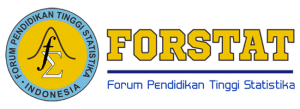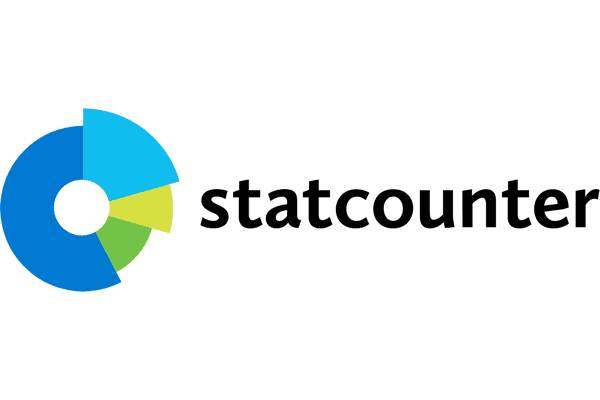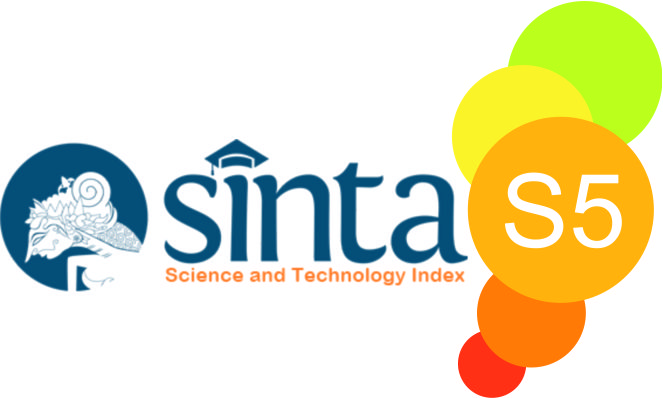Analisis K-Medoid Untuk Pemetaan Tingkat Pencemaran Udara di Provinsi Sulawesi Selatan
(1) Jurusan Matematika FMIPA UNM
(2) Jurusan Matematika FMIPA UNM
(3) Jurusan Matemtika FMIPA UNM
(4) Jurusan Matematika FMIPA UNM
(*) Corresponding Author
DOI: https://doi.org/10.35580/jmathcos.v5i2.38215
Abstract
Analisis gerombol berfungsi untuk mengelompokkan objek-objek dengan kesamaan karakteristik yang tinggi dalam 1 gerombol sementara objek-objek dengan ketidaksamaan karakteristik berada dalam gerombol yang berbeda. Analisis gerombol terbagi menjadi 2 yaitu hierarki dan non-hierarki. Penelitian ini menerapkan analisis gerombol non-hierarki yaitu metode k-medoid untuk menggerombolkan kabupaten/kota beserta empat sektornya yaitu transportasi, industri/agro industri, pemukiman, perkantoran/komersial di Provinsi Sulawesi Selatan berdasarkan indikator penyusun nilai Indeks Kualitas Udara (IKU) tahun 2019 dan 2020. IKU dikategorikan berdasarkan enam status Indeks Kualitas Lingkungan Hidup (IKLH). Untuk mendapatkan gerombol terbaik dari proses k-medoid maka setiap gerombol perlu dievaluasi menggunakan nilai koefisien silhouette. Hasil penelitian ini menunjukkan k = 2 gerombol dari metode k-medoid merupakan inisiasi gerombol terbaik dengan nilai koefisien silhouette terbaik sebesar 0,56. Hasil analisis terhadap hasil gerombol menunjukkan bahwa dengan penggunaan 2 gerombol, untuk data passive sampler 2019 menghasilkan gerombol 1 termasuk kategori IKLH sangat baik dengan nilai IKU sebesar 84,14 dan gerombol 2 masuk kategori IKLH kurang dengan nilai IKU sebesar 60,04. Untuk data passive sampler 2020 menghasilkan gerombol 1 termasuk kategori IKLH baik dengan nilai IKU sebesar 80,68 dan gerombol 2 masuk kategori IKLH kurang dengan nilai IKU sebesar 61,53.
Kata Kunci: Analisis gerombol, k-medoid, IKU, koefisien silhouette
Cluster analysis serves to group objects with high similarity of characteristics in one cluster while objects with dissimilarity of characteristics are in different clusters. Cluster analysis is divided into two, namely hierarchical and non-hierarchical. This study applies a non-hierarchical cluster analysis, namely the k-medoid method to group districts/cities and their four sectors, namely transportation, industrial/agroindustrial, residential, office/commercial in South Sulawesi Province based on indicators that make up the 2019 Air Quality Index (AQI) value and 2020. AQI are categorized based on six Environmental Quality Index (EQI) statuses. To get the best clusters from the k-medoid process, each cluster needs to be evaluated using the silhouette coefficient value. The results of this study indicate that k = 2 clusters from the k-medoid method are the best cluster initiations with the best silhouette coefficient value of 0.56. The results of the analysis of the cluster results show that with the use of 2 clusters, for 2019 passive sampler data, cluster 1 is included in the very good EQI category with a AQI value of 84.14 and cluster 2 is in the less EQI category with an AQI value of 60.04. For the 2020 passive sampler data, cluster 1 is included in the good EQI category with a AQI value of 80.68 and cluster 2 is in the less EQI category with a AQI value of 61.53.
Keywords: Cluster analysis, k-medoid, CLARA, AQI, Silhouette Coefficient
Full Text:
PDFReferences
Gujarati, D. N., C.Porter, D., & Mangunsong, R. C. (2012). Dasar-dasar Ekonometrika Buku 2 Edisi 5 (Basic Econometrics) / Damodar N.Gujarati. In Jakarta : Salemba Empat (5th ed., Vol. 28, Issue 3). Elsevier Ltd. https://doi.org/10.1016/j.eswa.2004.12.019
Hair Jr, J. F., Black Barry J, W. C., & Anderson, B. R. E. (2010). Multivariate Data Analysis Seventh Edition. Pearson. https://doi.org/10.4324/9781351269360
Halkidi, M., Batistakis, Y., & Vazirgiannis, M. (2001). On clustering validation techniques. Journal of Intelligent Information Systems, 17(2–3), 107–145. https://doi.org/10.1023/A:1012801612483
Herawatie, D., & Purbandini, E. W. (2014). Perbandingan Algoritma Pengelompokan NonHierarki untuk Dataset Dokumen. Seminar Nasional Aplikasi Teknologi Informasi (SNATI) Yogyakarta, 11–16.
Hidayati, R., Zubair, A., Hidayat Pratama, A., & Indana, L. (2021). Silhouette Coefficient Analysis in 6 Measuring Distances of K-Means Clustering. Techno.Com, 20(2), 186–197.
Ibrahim, R. N., Hayati, M. N., & Tisna Amijaya, F. D. (2020). Penerapan Algoritma K-Medoids pada Pengelompokan Wilayah Desa atau Kelurahan di Kabupaten Kutai Kartanegara. EKSPONENSIAL, 11, 153–158.
Johnson, R. A., & Wichern, D. W. (2007). Applied Multivariate Statistical Analysis 6th edition.pdf. Prentice
Hall. Kaufman, L., & Rousseeuw, P. J. (1990). Finding Group in Data. John Willey & Sons, Inc.
Masito, A. (2018). Risk Assessment Ambient Air Quality (NO2 And SO2) and The Respiratory Disorders to Communities in the Kalianak Area of Surabaya. Jurnal Kesehatan Lingkungan, 10(4), 394. https://doi.org/10.20473/jkl.v10i4.2018.394-401
Ridho, I. M. (2018). Penggerombolan Provinsi-Provinsi di Indonesia Berdasarkan Indikator Pembangunan Berkelanjutan. Skripsi: Institut Pertanian Bogor.
Sihombing, R. E., Rachmatin, D., & Dahlan, J. A. (2019). Program Aplikasi Bahasa R Untuk Pengelompokan Objek Menggunakan Metode K-Medoids Clustering. EurekaMatika, 7(1), 58–79.
Soemarwoto, O. (1992). Analis Dampak Lingkungan. In GMU Press (Vol. 8, Issue 2, pp. 428–435). GMU Press.
Supranto, J. (2004). Analisis multivariat : Arti dan Interpretasi. Jakarta: Rineka Cipta.
Article Metrics
Abstract view : 135 times | PDF view : 1 timesRefbacks
- There are currently no refbacks.
Copyright (c) 2022 JMathCos (Journal of Mathematics, Computations, and Statistics)

This work is licensed under a Creative Commons Attribution-NonCommercial-ShareAlike 4.0 International License.
Indexed by:

This work is licensed under a Creative Commons Attribution-NonCommercial-ShareAlike 4.0 International License.











